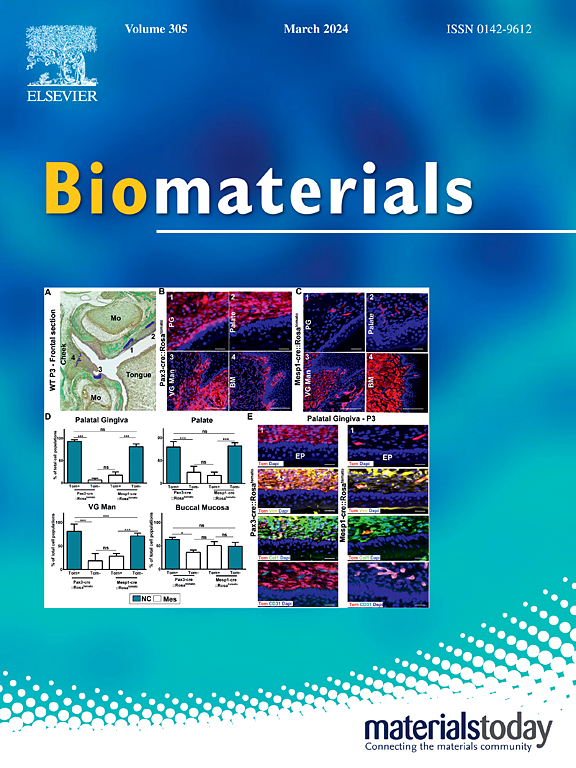含有山奈酚的血小板衍生细胞外囊泡给药系统用于治疗角膜新生血管病变
IF 12.8
1区 医学
Q1 ENGINEERING, BIOMEDICAL
引用次数: 0
摘要
本文章由计算机程序翻译,如有差异,请以英文原文为准。

Platelet-derived extracellular vesicle drug delivery system loaded with kaempferol for treating corneal neovascularization
Platelet-derived extracellular vesicles (PEVs) have drawn attention due to their multifunctionality, ease of procurement, and abundant supply from clinical-grade platelet concentrates. PEVs can be readily endocytosed due to their lipid bilayer membrane and nanoscale structure, enhancing the bioavailability and efficacy of their therapeutic effects. PEVs also contain various trophic factors that enhance their effectiveness as therapeutic agents. Given that nanomedicine provides benefits over traditional treatments for eye diseases by surpassing physical ocular barriers, PEVs combined with the anti-angiogenic agent, kaempferol (KM), were assessed for their capacity to inhibit abnormal blood vessel formation in the cornea. Characterization of the nanoparticles suggested the successful preparation of KM-loaded PEVs (PEV-KM) with a mean diameter of approximately 160 nm and an encapsulation efficiency of around 61 %. PEV-KM was effectively internalized into human vascular endothelial cells, resulting in inhibited function, as evidenced by lower wound closure rates, decreased tube formation capacity, and downregulation of angiogenesis-related gene expression. Moreover, prolonged ocular retention was observed following the topical application of PEV and PEV-KM in mouse eyes. In an alkali-burned corneal neovascularization (CoNV) mouse model, PEV (1 %) was found to decrease vessel formation in the injured cornea. However, the combination of PEV and KM (1 % PEV with KM 6 μg/mL) showed an even stronger effect in inhibiting CoNV and decreasing the expression of proangiogenic and inflammatory cytokines. Overall, our data suggests that the topical administration of PEVs, either alone or alongside KM (PEV-KM), is a promising therapy for the management of CoNV.
求助全文
通过发布文献求助,成功后即可免费获取论文全文。
去求助
来源期刊

Biomaterials
工程技术-材料科学:生物材料
CiteScore
26.00
自引率
2.90%
发文量
565
审稿时长
46 days
期刊介绍:
Biomaterials is an international journal covering the science and clinical application of biomaterials. A biomaterial is now defined as a substance that has been engineered to take a form which, alone or as part of a complex system, is used to direct, by control of interactions with components of living systems, the course of any therapeutic or diagnostic procedure. It is the aim of the journal to provide a peer-reviewed forum for the publication of original papers and authoritative review and opinion papers dealing with the most important issues facing the use of biomaterials in clinical practice. The scope of the journal covers the wide range of physical, biological and chemical sciences that underpin the design of biomaterials and the clinical disciplines in which they are used. These sciences include polymer synthesis and characterization, drug and gene vector design, the biology of the host response, immunology and toxicology and self assembly at the nanoscale. Clinical applications include the therapies of medical technology and regenerative medicine in all clinical disciplines, and diagnostic systems that reply on innovative contrast and sensing agents. The journal is relevant to areas such as cancer diagnosis and therapy, implantable devices, drug delivery systems, gene vectors, bionanotechnology and tissue engineering.
 求助内容:
求助内容: 应助结果提醒方式:
应助结果提醒方式:


